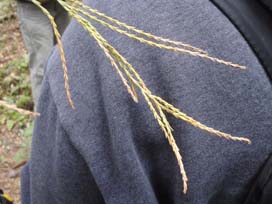
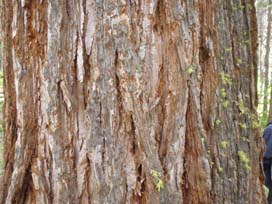
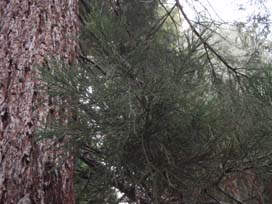
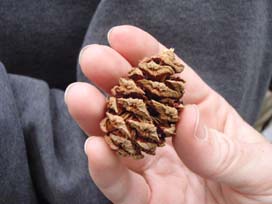
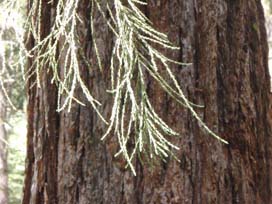
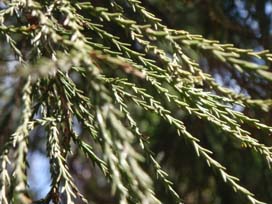
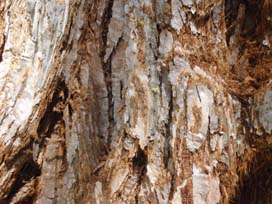
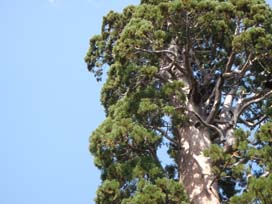
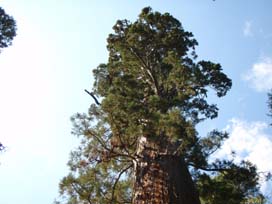
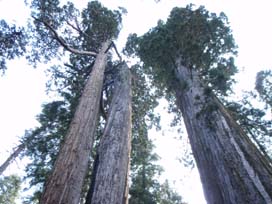
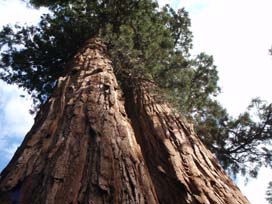
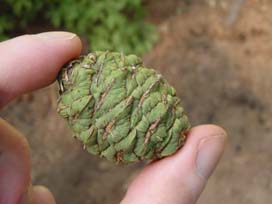
giant sequoia
Sequoiadendron giganteum
Family: Taxodiaceae.
Type: Large evergreen conifer.
Needles: All of its foliage is similar to the sun-foliage of the coast redwood: tiny awl-shaped leaves along long, thin branches. Foliage is concentrated close to the stem at the top of the tree, like the cotton on a Q-tip.
Twig: The trunk of the giant sequoia is light brown with very deep furrows, similar to that of the coast redwood but lighter and less red. Individual branches can be larger than full-grown trees of most other species.
Cone: A barrel-shaped cone similar to that of the coast redwood, but larger. The giant sequoia's cones are serotinous; they remain closed until opened by fire, and will stay on the tree for twenty years or more. Closed cones will sometimes be observed on the ground due to herbivory by squirrels and beetles.
Miscellaneous: The giant sequoia is the largest tree in the world; the coast redwood grows taller, but the giant sequoia is more massive. It can live up to about three thousand years. It is not shade-tolerant. It used to be fairly widespread in California, but is now restricted to about seventy groves in lower montane mixed conifer zones, including some at Yosemite. They are found in areas with a consistent supply of soil moisture. Giant sequoias do not resprout after fire, but their bark is fire-resistant and they typically survive fire. Seedlings require clear, open areas to grow, so fire-control policies inhibit the ability of the giant sequoia to reproduce.
 |
 |
 |
 |
 |
 |
 |
 |
 |
 |
 |
 |